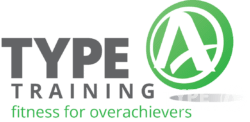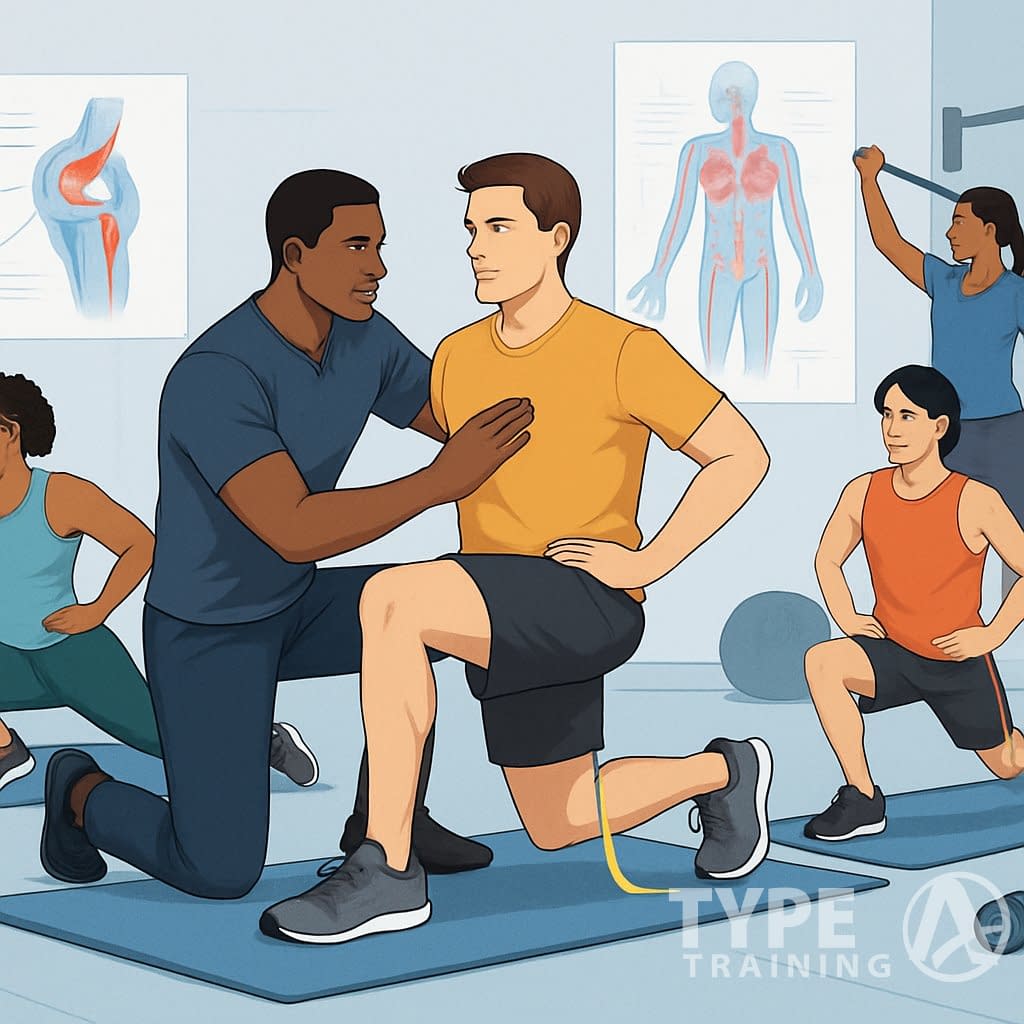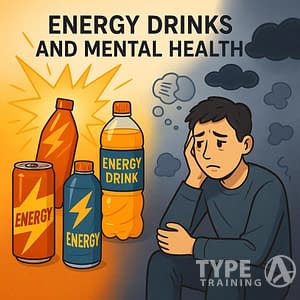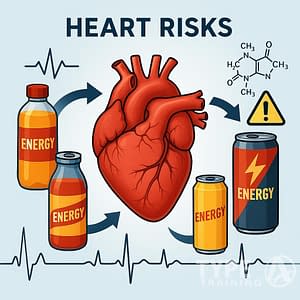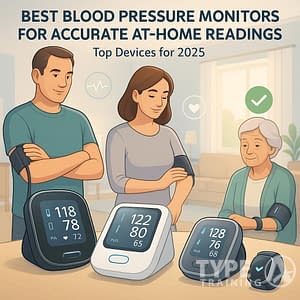Athletes in Manhattan deal with some pretty unique challenges that can mess with their performance and bump up their risk of injury. Long hours hunched over Midtown desks, dodging crowds on subway platforms—NYC life just piles on the muscle imbalances and funky movement habits that most training plans totally ignore.
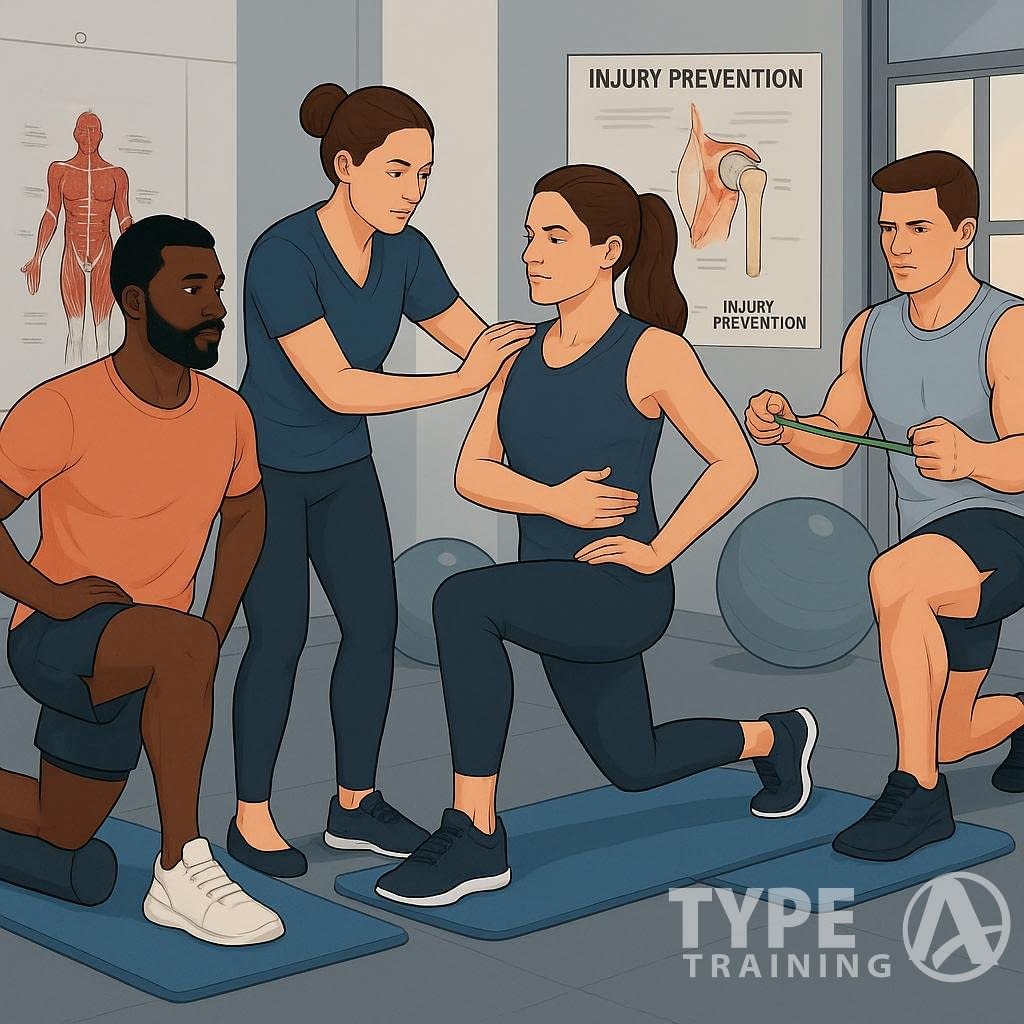
Corrective exercise for athletes goes straight to the source, hunting down and fixing the movement patterns, muscle weaknesses, and structural quirks that hold athletes back and set them up for injuries. It’s not your average fitness routine—corrective exercises look for the root cause instead of just slapping a Band-Aid on the symptoms. Corrective exercise for athletes plays a vital role in enhancing performance and preventing injuries.
Maybe you’re a weekend warrior tearing up Central Park, or maybe you’re training hard for your next competition. Either way, knowing how to use corrective strategies can seriously change your game.
Popular posts:
Key Takeaways
- Corrective exercise tackles muscle imbalances and movement issues that tank performance and cause injuries.
- Good assessments pinpoint your weak spots so you can actually fix them.
- Mobility work and stability training are clutch for dodging common injuries and boosting your game.
The Role of Corrective Exercise in Athletic Performance

Corrective exercise lays the groundwork for top-tier movement by smoothing out muscle imbalances and fixing how you move. These exercises teach your muscles to fire in the right sequence and loosen up stiff joints, which makes it way easier to move with power and efficiency.
Defining Corrective Exercise for Athletes
Integrating corrective exercise for athletes into your training routine can lead to significant performance improvements and decreased injury risks.
Corrective exercise is basically a system that uses movement assessments and targeted drills to fix the way your body moves. The National Academy of Sports Medicine points out these are all about cleaning up movement quality for better function.
In Manhattan’s high-stakes environment, corrective exercises go after the weak links that pop up from your sport or your daily grind. A Chelsea basketball player might have tight hip flexors from all that jumping, while a Central Park runner could be stuck with stiff ankles.
These exercises aren’t just about piling on muscle. They retrain your nervous system, getting your body to move the right way, so you’re not wasting energy or risking injury.
Key Components of Athletic Corrective Exercise:
- Movement pattern assessment
- Muscle activation drills
- Joint mobility work
- Postural correction techniques
Linking Corrective Exercise and Athletic Performance
Corrective exercises give you a solid foundation so you can train harder and compete better. When your body moves well, you can tap into more power without burning out.
If your shoulder blade isn’t gliding right during a tennis serve, you’ll lose power and probably get hurt. Corrective exercises clean up these issues before they turn into real problems.
Urban life in Manhattan brings its own set of challenges. Desk jobs and long commutes create postural messes that drag down your performance. A trainer in the Upper East Side might be working with a client who spends the week at a Financial District office and shows up with forward head posture.
Research keeps showing that corrective exercises help muscles fire at the right time, with the right oomph. That’s pretty much the secret sauce for peak performance.
Movement Patterns and the Kinetic Chain
Your body works as one big kinetic chain—move one joint, and the others feel it. The chain includes your feet, ankles, knees, hips, spine, shoulders, and arms, all working together.
If one link is off, the rest have to pick up the slack. That leads to weird compensations, which kill your efficiency and up your injury risk. A SoHo athlete with stiff ankles might start getting knee pain because their body’s trying to work around the problem.
Common Kinetic Chain Dysfunctions in Athletes:
- Ankle stiffness messing with knee tracking
- Hip weakness making your back do extra work
- Shoulder blade issues limiting arm movement
- Core instability messing with power transfer
Movement patterns are the building blocks of everything athletic. Whether you’re sprinting in Tribeca or hitting the weights in Midtown, your body’s using basic patterns like squats, lunges, pushes, and pulls.
Corrective exercises help you get back to moving well by fixing restrictions and imbalances up and down the chain. Better movement equals better performance—simple as that.
Identifying and Addressing Muscle Imbalances and Movement Dysfunctions
Muscle imbalances pop up when opposing muscle groups don’t match up in strength or flexibility. Movement dysfunctions show up as weird compensation patterns that mess with your athletic performance.
These problems are everywhere, especially for Manhattan pros who sit all day and then go hard on the weekends.
Moreover, corrective exercise for athletes ensures that movements are optimized, which can drastically improve athletic performance.
Understanding Muscle Imbalances
Muscle imbalances happen when one muscle group gets stronger or tighter than its opposite. That throws off your movement, hurts your performance, and makes injuries more likely.
By focusing on corrective exercise for athletes, you can identify and address muscle imbalances that compromise performance.
Repetitive moves, bad posture, and too much sitting are the usual suspects. If you’re working in Midtown and glued to a screen all day, odds are your hip flexors are tight and your glutes are asleep.
Primary types of muscle imbalances:
- Length-tension imbalances: Muscles are either too short or too long
- Force-couple imbalances: Muscles aren’t working together right
- Reciprocal inhibition: Tight muscles shut down their opposites
Upper East Side runners often end up with tight calves and weak tibialis anterior muscles. Hello, shin splints and slower runs.
Recognizing Movement Dysfunctions in Athletes
Movement dysfunctions show up as compensation patterns in basic movements. Your body’s just trying to get the job done with whatever it’s got, but that can lead you down a bad path.
Common movement dysfunction signs:
- Knees caving in during squats
- Leaning way forward on overhead moves
- Left and right sides moving differently
- Stiff joints limiting your range
Chelsea gym regulars often have shoulder problems thanks to desk posture and too much upper body training. Maybe one shoulder hikes up during presses, or your arms drop forward on squats.
Movement dysfunctions usually come from messed up force couples and length-tension relationships. If your muscles can’t pull their weight, your body finds a workaround—and that’s rarely a good thing.
Assessment of Alignment, Mobility, and Stability
A solid assessment looks at three things: static alignment, joint mobility, and dynamic stability. A good corrective exercise specialist in Manhattan will check all of these.
Static alignment assessment checks your posture while standing or sitting. Off-kilter alignment usually points to deeper muscle imbalances.
Incorporating corrective exercise for athletes into your routine will enhance your stability and mobility, essential for peak performance.
Mobility testing checks how far your joints can actually move. Limited ankle mobility—super common for Financial District folks—often leads to knee and hip problems.
Stability assessment looks at how well you can control movement and keep joints in the right spot. Weak core? Your other muscles have to pick up the slack.
| Assessment Type | What It Reveals | Common Issues |
|---|---|---|
| Static Alignment | Postural deviations | Forward head, rounded shoulders |
| Mobility | Joint restrictions | Limited hip flexion, tight thoracic spine |
| Stability | Control deficits | Poor single-leg balance, core weakness |
Common Muscular Imbalances in Sports
Sports-specific habits create their own set of predictable muscle imbalances. Knowing the patterns helps you get ahead of injuries.
Upper crossed syndrome is everywhere among SoHo office workers who also play sports. Tight chests and weak upper backs mean rounded shoulders and neck pain.
Lower crossed syndrome? That’s for Tribeca pros who sit all day. Tight hip flexors and sleepy glutes tilt your pelvis forward and crank up back pain.
Pronation distortion syndrome is big among West Village runners. Tight calves and weak posterior tibialis muscles make your feet roll in, which can lead to plantar fasciitis.
These imbalances can seriously mess with your performance and up your injury odds. Targeted corrective exercises can bring things back in balance and clean up your movement.
Basketball players often end up with strong quads but weak hamstrings. Tennis players? They usually have dominant-side shoulder issues from all those serves and swings.
Designing Effective Corrective Exercise Programs
A focused approach to corrective exercise for athletes can help in addressing specific movement deficiencies.
Building a corrective exercise plan that actually works means taking a systematic approach. You’ve got to address your unique movement quirks and physical limits.
The best programs lean on evidence, personal assessments, and progressive training that adapts as you improve.
Principles of Program Design
It all starts with a thorough movement screen to spot your specific imbalances. Corrective exercise is about finding those weak links and putting together a game plan that restores balance.
Follow the stability-mobility-strength order: dial in joint stability, open up your range of motion, then build strength with the right moves.
Key design principles:
- Start with the basics before getting fancy
- Fix pain or dysfunction before worrying about performance
- Mix in both corrective and preventive moves
- Balance out opposing muscle groups
Manhattan folks often have forward head posture from desk jobs. Your specialist should help you target those specific issues—think cervical retraction and thoracic extension.
Training the right physical qualities is crucial. That means picking the right exercises, intensity, frequency, and duration for you—not just some cookie-cutter plan.
The Importance of Customized Exercise Plans
Generic routines just don’t cut it. A custom exercise plan takes into account your NYC lifestyle, work stress, and all the unique stuff you deal with.
Your corrective exercise specialist should factor in your commute, work setup, and what you do for fun. Someone in the Upper East Side who walks a lot will need something different than a Financial District worker who sits all day.
Customization factors:
- Your fitness level and injury history
- The sports or activities you do
- Work posture stresses
- How much time you actually have
A tailored plan means you’re working on the real issues, not just guessing. If your hips are tight from subway rides, your program should focus on hip flexor mobility and glute activation.
Corrective exercises have to be individualized and programmed with some strategy. That’s how you get results that stick.
Progressive Training and Ongoing Assessment
Your corrective exercise plan isn’t set in stone—it needs to evolve as you do. Progressive training keeps you moving forward and helps dodge plateaus.
Progressive phases:
- Stabilization phase: Nail the basics and good form
- Strength phase: Build strength in those new, improved patterns
- Integration phase: Use your better movement in real-life activities
Regular check-ins let your specialist tweak the program as you improve. Maybe you start with basic hip bridges, and as you get stronger, you move to single-leg versions.
Life in Manhattan moves fast, so your plan should too. Your trainer should track your progress in mobility, strength, and how you move, making sure every session counts.
New challenges pop up as your life changes—maybe you start cycling instead of walking, for example. Your corrective strategy should shift with you.
Great corrective exercise programs blend mobility work with strength training, creating a flexible, full-picture approach that keeps up with whatever life (or NYC) throws your way.
Key Corrective Techniques for Injury Prevention and Pain Relief
Incorporating corrective exercise for athletes can address pain and improve overall functional movement.
Corrective exercise techniques zero in on movement patterns and muscle imbalances that trip up so many Manhattan professionals and athletes. These methods dig into pain right at the source, while also building up your body’s resilience for the long haul.
Targeted Exercises for Pain Relief
Chin tucks are a lifesaver for Manhattan office workers dealing with neck and upper back pain. That forward head posture from endless screen time? Chin tucks help reset it.
Just sit up tall, gently pull your chin back, and lengthen the back of your neck. Hold for five seconds and aim for 10-15 reps during your workday.
Scapular retractions fight rounded shoulders—a classic issue in Chelsea and SoHo. Squeeze your shoulder blades together, arms relaxed by your sides.
Hip flexor stretches loosen up tight hips from all that sitting on commutes. The couch stretch really gets into those deep hip flexors that mess with your lower back.
Glute bridges wake up sleepy glutes and take pressure off your lower back. These corrective exercises help restore proper alignment and cut down on those weird compensation patterns.
Strategies for Injury Prevention
Movement screening spots injury risks before they turn into problems. Upper East Side athletes get a lot out of these assessments—they reveal hidden asymmetries and dysfunctions.
Progressive loading is all about slowly ramping up the challenge. It lets your tissues adapt, which keeps weekend warriors from overdoing it after long desk days.
Muscle imbalance correction takes aim at strength gaps between muscle groups. You see this a lot:
- Tight chest, weak upper back
- Overactive hip flexors, lazy glutes
- Wobbly core, poor spinal stability
Postural awareness training teaches you the right way to move through daily life. Folks in the Financial District learn to sit better and transition smoothly to avoid building up stress injuries.
Injury prevention exercises target those stabilizer muscles that protect your joints when life throws surprises at you.
Self-Myofascial Release and Foam Rolling
Foam rolling breaks up stubborn knots and improves tissue quality in tight spots. Tribeca fitness fans use it for IT bands and calves—city walking takes a toll.
Here are some common areas to focus on:
| Body Region | Common Issues | Rolling Technique |
|---|---|---|
| Thoracic spine | Desk posture stiffness | Gentle extension over roller |
| Hip flexors | Sitting tightness | Prone with sustained pressure |
| Calves | Walking/standing fatigue | Slow, controlled passes |
| Quadriceps | Cycling/running tension | Multiple angles, pause on sore spots |
Keep the pressure at a level that’s just a bit uncomfortable—never sharp pain. West Village athletes usually spend 30-60 seconds per area, moving slowly and steadily.
Timing actually matters. Pre-workout foam rolling helps you move better, while post-workout rolling speeds up recovery and cuts down on next-day soreness.
And don’t forget to breathe. Focusing on your breath during myofascial release helps your body relax and lets the tissue loosen up.
Practical Corrective Exercise Examples
Daily movement breaks fit right into a busy Manhattan day. Set a phone reminder every half hour for neck rotations or shoulder rolls.
Desk-based corrections can help right away:
- Thoracic extensions over your chair back
- Seated spinal twists for more rotation
- Ankle pumps to wake up your legs
Commute-friendly exercises make the most of your travel time. On the subway? Try subtle calf raises and pelvic tilts while you stand.
Home routines don’t need much equipment but can make a huge difference.
For mornings (just five minutes):
- Cat-cow stretches for your spine
- Glute bridges to wake up your hips
- Band pull-aparts for your shoulders
Evenings (about ten minutes):
- Child’s pose to decompress your back
- Pigeon pose for hip flexibility
- Wall slides for shoulder blades
Weekend intensive sessions let you dig deeper. Chelsea gym-goers often spend 20-30 minutes working on movement patterns and fixing weak spots.
Frequently Asked Questions
Athletes and fitness professionals have plenty of questions about corrective exercises and what it takes to get certified. People want to know about performance perks, injury prevention methods, and the credentials needed to run these programs well.
Trainers often discuss the benefits of corrective exercise for athletes along with its role in enhancing performance.
What are the benefits of corrective exercises for athletes in terms of enhancing performance?
Corrective exercises boost your movement quality by fixing muscle imbalances and poor patterns. Better power transfer comes naturally when your body’s working right.
You’ll notice your coordination and balance get a big upgrade. When you sort out weak or overactive muscles, your body control jumps up, and that shows in your sport.
Manhattan athletes working with specialists often gain more range of motion. Extra flexibility and mobility mean you can move smoother in training and competition.
These exercises also wake up muscles that usually don’t pull their weight. When every muscle pitches in, you move with more force and precision—who doesn’t want that?
How can corrective exercises reduce the risk of injury for athletes?
Corrective exercises address muscle imbalances that often set you up for injury. Strengthening weak muscles and stretching tight ones creates a more balanced body.
With regular practice, your movement patterns get a lot cleaner. Poor mechanics stress your joints and tissues in ways they’re just not built for.
You’ll develop better body awareness and control during athletic moves. That improved proprioception helps you react fast when something unexpected happens.
NYC athletes stuck at desks a lot end up with forward head posture and rounded shoulders. Corrective work can undo those issues before they lead to neck or shoulder injuries in sports.
What are some common examples of corrective exercises for athletes?
Hip flexor stretches and glute activation drills undo the damage of too much sitting. They’re a must for Manhattan pros logging long hours at a desk.
Regularly practicing corrective exercise for athletes can lead to significant improvements in athletic performance.
Thoracic spine mobility work tackles the rounded upper back you see everywhere in the city. Cat-cow stretches and thoracic extensions help your spine move the way it should.
Single-leg moves like lunges and step-ups boost balance and fix leg strength differences. They also fire up your core and hips for better stability.
Shoulder blade squeezes and wall slides fight forward shoulders. These moves build up the muscles between your shoulder blades and stretch out your chest.
What criteria determine if a muscle is considered underactive within the trunk?
Corrective exercise for athletes can pinpoint weak areas and ensure a more balanced and effective training regime.
A muscle’s underactive if it doesn’t kick in during movement tests. You’ll often spot this as weakness or slow response when you put it to the test.
Your posture gives clues—like if your lower back arches too much, your deep core might be slacking. Exercises like squats or overhead reaches can also reveal underactive muscles if you can’t hold good alignment.
Sometimes, pain or tension pops up in certain spots during or after exercise. That’s often because other muscles are picking up the slack for underactive ones.
Can becoming a Certified Corrective Exercise Specialist improve my ability to train athletes?
Corrective exercise certification gives you skills to spot movement issues that regular training certs don’t even touch. You learn to catch subtle imbalances that impact performance.
Understanding how to implement corrective exercise for athletes can greatly enhance your training approach.
This specialty teaches you how to build exercise progressions for common movement problems. You’ll help athletes move better before they chase heavier lifts or faster sprints.
NYC trainers with corrective exercise know-how often work with higher-level athletes and can charge more for their expertise. That deeper knowledge lets you offer more targeted, effective programs.
You also get a better handle on anatomy and biomechanics, which makes all your training safer and more effective. Your clients will notice the difference—promise.
How does a Corrective Exercise Certification differ from a general personal training certification?
General personal training certifications teach the basics: exercise techniques and how to build workout plans. They usually don’t spend much time on movement assessment or fixing dysfunctions.
Corrective exercise certifications get way more detailed about movement. You’ll dig into movement analysis and assessment, learning how to spot muscle imbalances and those weird compensations people develop.
Specialists in corrective exercise for athletes can offer insights that elevate athletic performance and reduce injury risks.
The way you pick and progress exercises is also pretty different. Corrective exercise focuses on targeted moves that address actual dysfunctions, not just general fitness.
Trainers in Manhattan who have this corrective exercise background can help clients with movement limitations—stuff general trainers might not touch. It’s a niche, but it can get you in the door with physical therapy clinics or even sports medicine practices.
Lastly, the use of corrective exercise for athletes can set your training apart and lead to better outcomes.
